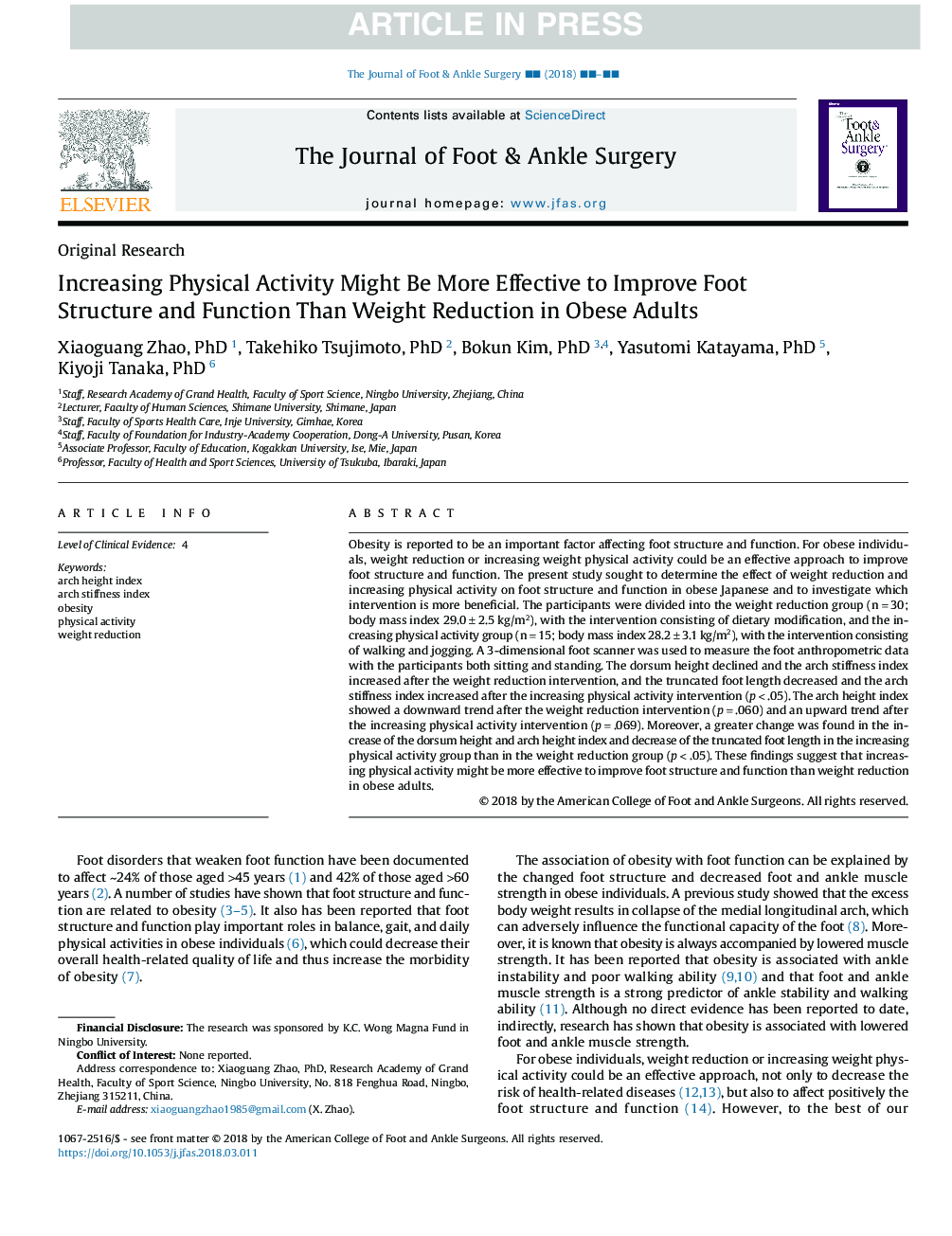| Article ID | Journal | Published Year | Pages | File Type |
|---|---|---|---|---|
| 8950706 | The Journal of Foot and Ankle Surgery | 2018 | 4 Pages |
Abstract
Obesity is reported to be an important factor affecting foot structure and function. For obese individuals, weight reduction or increasing weight physical activity could be an effective approach to improve foot structure and function. The present study sought to determine the effect of weight reduction and increasing physical activity on foot structure and function in obese Japanese and to investigate which intervention is more beneficial. The participants were divided into the weight reduction group (nâ=â30; body mass index 29.0â±â2.5 kg/m2), with the intervention consisting of dietary modification, and the increasing physical activity group (nâ=â15; body mass indexâ28.2â±â3.1 kg/m2), with the intervention consisting of walking and jogging. A 3-dimensional foot scanner was used to measure the foot anthropometric data with the participants both sitting and standing. The dorsum height declined and the arch stiffness index increased after the weight reduction intervention, and the truncated foot length decreased and the arch stiffness index increased after the increasing physical activity intervention (pâ<.05). The arch height index showed a downward trend after the weight reduction intervention (pâ=â.060) and an upward trend after the increasing physical activity intervention (pâ=â.069). Moreover, a greater change was found in the increase of the dorsum height and arch height index and decrease of the truncated foot length in the increasing physical activity group than in the weight reduction group (pâ<.05). These findings suggest that increasing physical activity might be more effective to improve foot structure and function than weight reduction in obese adults.
Related Topics
Health Sciences
Medicine and Dentistry
Orthopedics, Sports Medicine and Rehabilitation
Authors
Xiaoguang PhD, Takehiko PhD, Bokun PhD, Yasutomi PhD, Kiyoji PhD,
